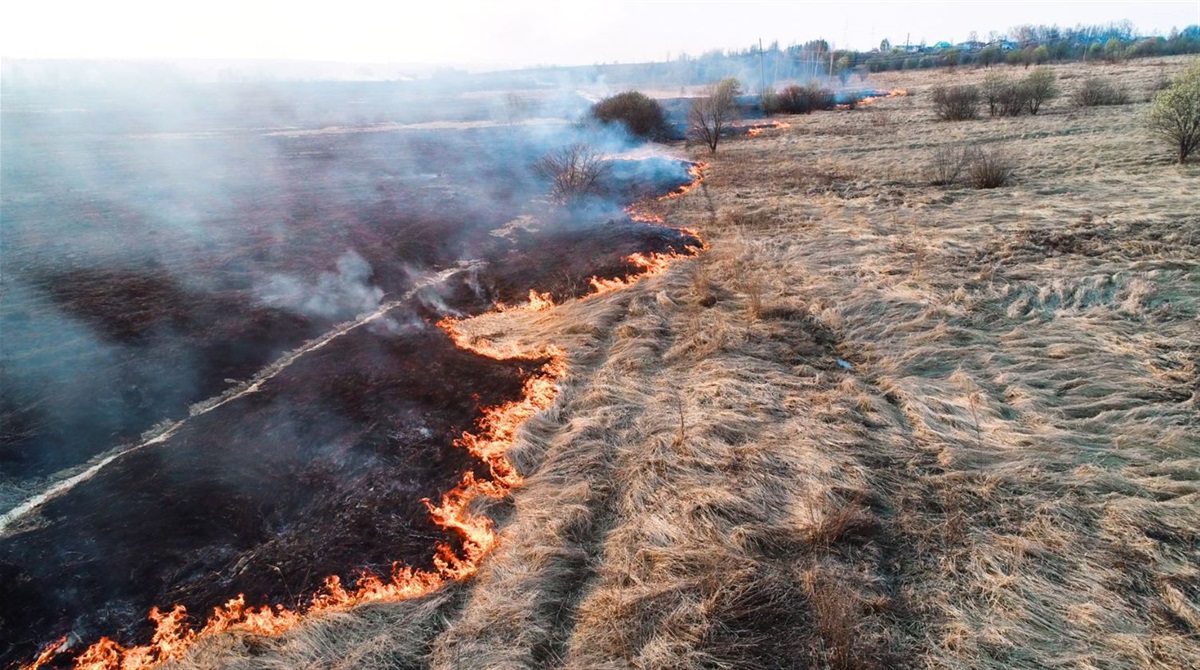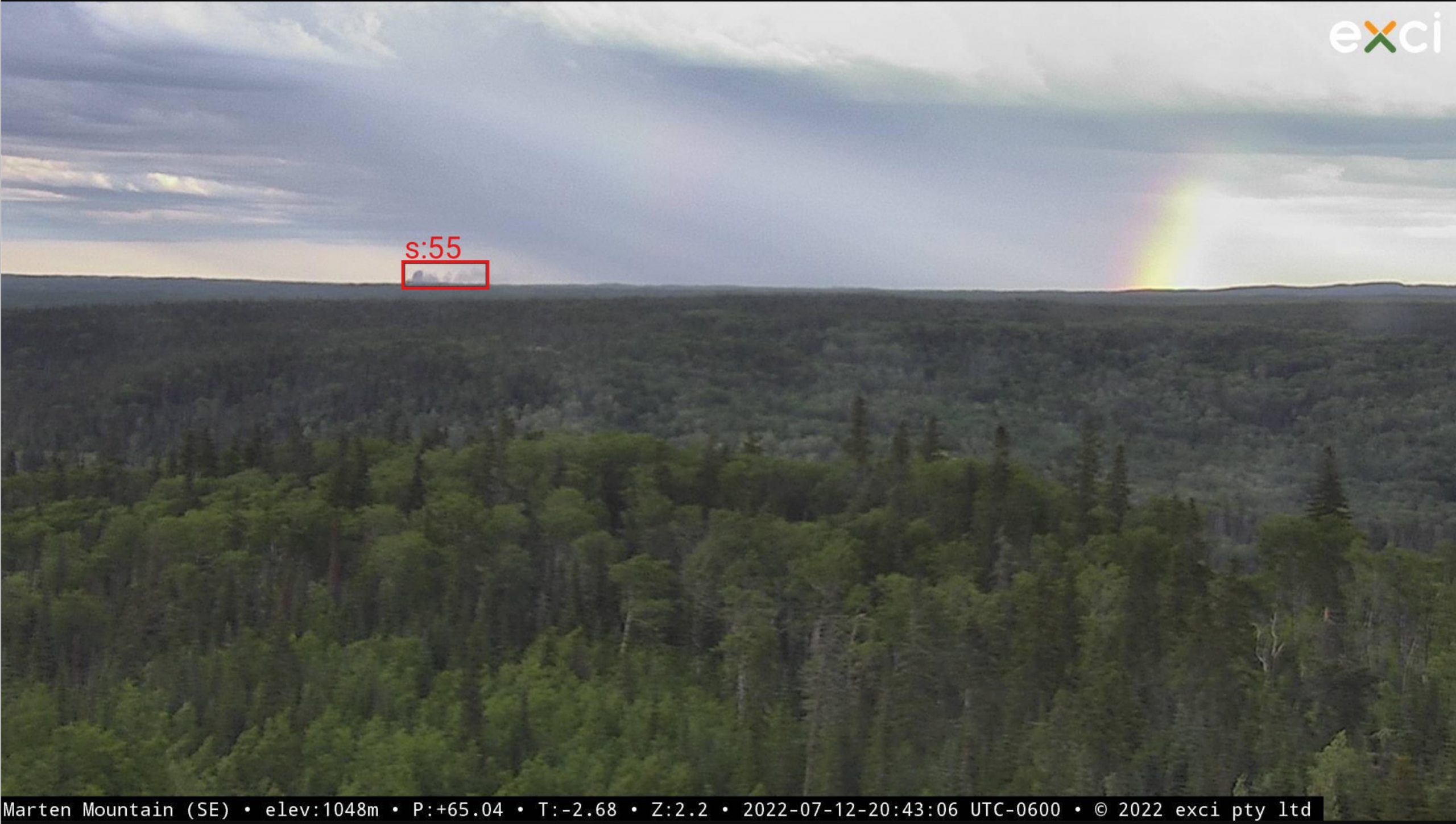Presentation
A. Exploratory research
I. “Smoke Alarm for the Bush”

Fireball.International (now exci) was founded in May 2019 and a highly qualified team of software engineers, data scientists, and machine learning experts were hired. The company has also acquired an exclusive license on the Berkeley FUEGO patent for satellite-based fire detection. The company develop and commercialise a scalable early bushfire detection and notification system that is powered by advanced machine learning algorithms.
In Australia, Global fire disasters destroyed millions of hectares of land, lives, ecological systems, and infrastructure
It is best suited to high-value areas – including those on the rural-urban interface, and high-risk areas such as national parks, state forests and conservation areas – providing fast detection during the day.
Climate change will worsen this situation, making bushfires even more likely, last longer and more intense. The economic, social, and environmental impact caused by bushfires is severe.
exci is the “Smoke Alarm for the Bush”. The exci system detects bushfires automatically within minutes, using satellite and ground-based sensor data analysed by powerful deep machine learning algorithms. Even small fires are automatically detected within minutes with a near-zero rate of false positives.
satellite and ground-based sensor data analysed by powerful deep machine learning algorithms
II. “Clean Water AI”

Clean Water AI is an application that employs its own CNN (Convolutional Neural Network) and computer vision to detect dangerous particles and bacteria in water. Clean Water AI enables users to observe their water in nearly the same fashion they would observe security footage. Through a deep learning neural network, users can chart water contamination on a microscopic level and in real time
People using water devices, Infrastructures in charge of water cleanliness
Customers using providing water devices
Clean water ai is an iot device that continuously monitors water quality around water sources for dangerous bacterias and harmful particles.
Clean Water AI is a device that uses a deep learning neural network to detect dangerous bacteria and harmful particles in water. . Users can see drinking water at a microscopic level, just like they would view footage from a security camera, with real-time detection and contamination mapping.
CNN (Convolutional Neural Network), deep learning neural network and computer vision
III. HVAC-Refrigeration predictive control solution

Founded in 2015 by two accomplished entrepreneurs, Frédéric Crampé and Patrick Leguillette, BeeBryte addresses the European market from its headquarters in Lyon/France and the Asian market from its Singapore office. Its strategic investors include EREN GROUPE and CNR. BeeBryte is also supported by French Sovereign Fund BPIFRANCE and French Environmental Agency ADEME.
Customers of large commercial buildings or workers from sensitive production sites
Temperature-controlled storage facilities; Sensitive production sites (food industry, clean rooms, …); Large commercial buildings (shopping centers, office towers, universities, …)
Consume better, improve the reliability of HVAC-R installation, enhance technical and operational performance, increase thermal comfort, and have measurable progress in CSR strategy
The project is based on a proprietary energy optimization technology that is used by BeeBryte team to manage HVAC-R. They add a layer of intelligence like an “autopilot” that uses an IoT gateway to communicate with thermal equipment and management systems (BMS, PLCs). The algorithm controls the operation of the installation remotely, anticipating the thermal needs of the building by forecasting changes in weather, business activity and occupation patterns. By automatically modifying the setpoints of the HVAC-R equipment (chilled water temperature, pump or AHU speed, etc.), the system becomes predictive and adaptive as opposed to traditional reactive control.
AI; IoT; management systems (BMS, PLCs); machine learning algorithms
IV. Machine vision technology to predict biomass value functions

Brainpool is an Artificial Intelligence services company powered by a global network of 500 AI and Machine Learning experts. Brainpool enables organizations to access some of the greatest mind in AI and leverage their knowledge and expertise to solve the most pressing business challenges.
Diverse (Consulting)
Department of the Canadian Government in this case
The Department of the Canadian Government client aimed to develop a platform that would enable them to track changes in abundance of natural resources, conduct risk analysis and forecast resource demand under different government policy scenarios; enabling them to proactively take action to ensure accessibility and sustainability of resources across generations.
Brainpool developed a proof of concept (PoC) model that uses SOTA pre-trained deep-learning networks models for object detection and semantic segmentation to process satellite imagery (and remote sensing data) for a case study region of Canada for the purposes of creating a lower dimensional dataset suitable for use in an agent-based modelling environment.
pre-trained deep-learning networks; satellite imagery
B. Deepening

I. Selected Projet : “Smoke Alarm for the Bush”
exci detects bushfires and alerts authorities automatically within minutes after ignition
How can advanced AI’s fusing data from satellites and ground-based cameras improve the living of fauna and flora in forest areas ?
Victims of Australian bushfires who are still suffering from the traumatic experiences of losing their homes and even loved ones is one of he main reason I chose this project. Observing and experiencing the climate change-driven implications of unprecedented global fire disasters that destroyed millions of hectares of land, lives, ecological systems, and infrastructure, I found very intersting that exci decided to develop and commercialise a scalable early bushfire detection and notification system that is powered by advanced machine learning algorithms.
II. User scenario
It is best suited to high-value areas – including those on the rural-urban interface, and high-risk areas such as national parks, state forests and conservation areas – providing fast detection during the day.
→ Electronic notifications are sent directly to nominated users as soon
as a fire event has been detected by either a camera or a satellite
source. Notifications can be provided via SMS or email.
→ The web-based map interface presents all the detection information
from cameras and satellites. Detection reports are viewed on a map that
includes images from the fire detection cameras, satellite imagery, and
reference maps. Our map is ideal for display in operations or monitoring
environments, such as fire stations or emergency services centres, to
provide a comprehensive overview of the camera and satellite coverage.
Access to individual camera feeds is also available from this interface,
allowing remote assessment of a fire. Our map can also be accessed on
mobile platforms.
→ The raw detection information is processed from both ground cameras
and satellites by the exci intelligence system. An API for access to
this data can be provided for integration with existing GIS or other
mapping/Common Operating Picture style systems. We understand there are
likely multiple platforms that would need to have access to the
detection data, and we can provide the data in multiple formats and with
custom parameters (e.g. temporal extent, metadata).
III. Technical Analysis
The exci system detects bushfires automatically within minutes, using satellite and ground-based sensor data analysed by powerful deep machine learning algorithms. Even small fires are automatically detected within minutes with a near-zero rate of false positives.
The exci system acquires imagery from ground-based cameras and sensor
data from satellites. The data is processed by a sophisticated AI that
detects signatures of fires such as smoke and heat. If a fire is
detected, reports are immediately presented to the relevant users, such
as first responders or asset owners.
During the 2021 fire season, exci processed over one billion images from ground-based cameras as well as analysed more than 500,000 satellite images (30GB per day). The system monitored over 125 million acres from Mexico to Canada covering California, Nevada, Oregon, Idaho, and Washington and parts of Australia. The exci system issued 8,672 notifications. Reports from California indicated that the system detected 66% of fires within a minute, 95% within 5 minutes, and nearly 100% within 10 minutes with a near zero-rate of false positives.
IV. Simulation
